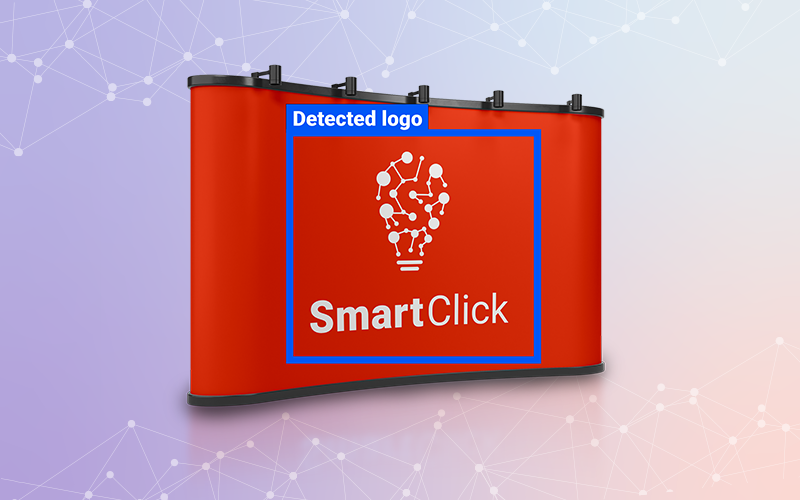In today’s digital age, logos have become an essential part of branding and marketing strategies for businesses. They serve as visual representations that help companies establish their identity and build brand recognition. With the increasing use of logos across various platforms, the need for logo detection and recognition technologies has emerged. In this article, we will explore the concept of logo recognizer, its applications, and the underlying technologies that power it.
What is Logo Recognizer?

Logo recognition refers to the process of identifying and classifying logos within images or videos. It involves the use of computer vision techniques and machine learning algorithms to detect and recognize logos with high accuracy. By analyzing visual features such as colors, shapes, and patterns, logo recognition systems can match logos against a database of known logos or categorize them into specific brand categories.
How Does Logo Recognition Work?
Logo recognition systems employ a series of steps to detect and recognize logos:
- Image Preprocessing: The input image or video frame is preprocessed to enhance its quality and reduce noise. This may involve resizing, normalization, and noise reduction techniques.
- Feature Extraction: The system extracts relevant visual features from the preprocessed image, such as color histograms, texture descriptors, or deep learning-based features.
- Logo Detection: Using the extracted features, the system searches for regions in the image that are likely to contain logos. This can be achieved through methods like template matching, edge detection, or object detection algorithms.
- Logo Recognition: Once logos are detected, the system compares them against a database of known logos or a set of predefined brand categories. This step involves matching the extracted features with the features of known logos to identify the brand accurately.
- Post-processing: In the final step, the system refines the results and eliminates false detections or incorrect classifications. This can involve techniques like geometric verification, clustering, or context-based reasoning.
Applications of Logo Recognition
Logo recognition technology finds applications in various domains, including:
1. Brand Monitoring and Protection
Companies can employ logo recognition systems to monitor where their logos appear across different media channels, including social media, websites, and advertisements. This helps them protect their brand identity and detect any unauthorized use of their logos.
2. Advertising and Marketing Analytics
Logo recognition enables advertisers and marketers to measure the visibility and impact of their brand logos in advertisements, product placements, or sponsorships. This data can be used to optimize marketing strategies and evaluate the effectiveness of brand exposure.
3. Visual Search and E-commerce
By integrating logo recognition into e-commerce platforms, users can search for products using logos. This simplifies the search process and enhances the user experience by allowing users to find products based on their preferred brands.
4. Augmented Reality (AR) and Virtual Reality (VR)
Logo recognition plays a vital role in AR and VR applications, where virtual content is overlaid in real-world environments. By recognizing logos, AR and VR systems can provide interactive experiences, such as virtual try-on for products or gamified marketing campaigns.
Overall Challenges
Logo recognition poses several challenges due to the diverse nature of logos and the complexity of real-world scenarios:
- Variability: Logos can vary in terms of size, orientation, color, and visual elements. Handling this variability requires robust and adaptable recognition algorithms.
- Partial Occlusion: Logos may appear partially occluded or distorted in images or videos. Overcoming partial occlusion is crucial for accurate logo detection and recognition.
- Scale and Speed: Real-time logo recognition systems must operate efficiently, even when dealing with large-scale databases and high-speed video streams.
- Logo Evolution: Logos evolve over time as companies rebrand or modify their visual identities. Also, recognition systems must adapt to these changes to maintain accuracy.
Advancements in Logo Recognizer Technologies
Recent advancements in computer vision and machine learning have greatly improved logo recognizer capabilities:
- Deep Learning: Deep learning techniques, such as convolutional neural networks (CNNs), have revolutionized logo recognition by automatically learning discriminative features from large-scale logo datasets.
- Transfer Learning: Transfer learning allows logo recognition models to leverage knowledge learned from pretraining on large-scale image datasets, such as ImageNet. This helps improve performance with limited annotated logo data.
- Generative Adversarial Networks (GANs): GANs can be used to generate synthetic logo images, enabling the augmentation of training data and addressing the challenge of limited logo datasets.
- Domain Adaptation: Techniques like domain adaptation help improve logo recognition performance by adapting models trained on one domain (e.g., product logos) to another domain (e.g., sports logos).
Future Trends
Logo recognition technology is expected to continue advancing, driven by ongoing research and emerging trends:
- Real-time Recognition: Faster and more efficient algorithms will enable real-time logo recognizer in various applications, including augmented reality and video analysis.
- Multimodal Recognition: Integrating logo recognition with other modalities, such as text and audio analysis, will enable a more comprehensive understanding of multimedia content.
- Unsupervised Learning: Unsupervised learning approaches will reduce the dependence on annotated logo datasets, allowing logo recognition systems to learn from unlabeled data.
- Privacy and Ethical Considerations: As logo recognition becomes more widespread, privacy concerns and ethical considerations regarding data collection and usage will need to be addressed.
Conclusion
Logo recognition plays a crucial role in various domains, enabling brand monitoring, marketing analytics, visual search, and immersive experiences. Advances in computer vision and machine learning have significantly improved the accuracy and efficiency of logo recognition systems. As technology continues to evolve, we can expect further enhancements in real-time recognition, multimodal understanding, and unsupervised learning. Logo recognition will continue to be a valuable tool for businesses in establishing their brand presence and protecting their identity.
Ready to experience the power of logo recognition? Request a demo from AIM Technologies today and discover how our advanced logo recognition solutions can benefit your business.
FAQs
1. How accurate are logo recognition systems?
- Logo recognition systems can achieve high levels of accuracy, especially with well-designed algorithms and large annotated datasets. However, accuracy may vary depending on factors such as logo variability, occlusion, and dataset size.
2. Can logo recognition work on low-quality images?
- Logo recognition performance can be affected by image quality. Low-quality images with noise or compression artifacts may pose challenges to accurate logo detection and recognition.
3. Are logo recognition systems capable of recognizing multiple logos in a single image?
- Yes, logo recognition systems can detect and recognize multiple logos within a single image. They utilize algorithms that can handle multiple object detection and classification.
4. Can logo recognition technology be used to identify counterfeit products?
- Logo recognition technology can aid in identifying counterfeit products by detecting unauthorized or altered logos. However, it should be complemented with other authentication methods for comprehensive product verification.
5. Are there any privacy concerns associated with logo recognition?
- Logo recognition systems can raise privacy concerns, especially when used for monitoring or tracking purposes. Proper safeguards and compliance with privacy regulations are necessary to address these concerns.




